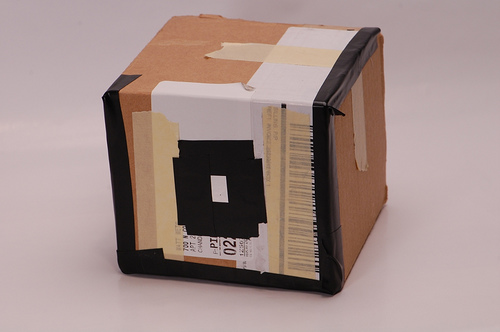The reason I am dragging this up is that most people do not know that the windows on our houses are actually doing something very similar to what that pin-hole camera was doing. They are taking and focusing the light from outside into images on the walls. Now, the sizes of the windows are usually so large that you are not going to get anything more than distinct blurry blobs on the walls. This is because of the size of the room, the distance of the aperture (the window) in relation to the wall and of course the size of the aperture. With a large window the rays of light cross and combine to obscure and real detail. However, it is also possible to intentionally build a room with the right dimensions and focal length (distance from the window to the wall) so that what is seen on the wall is a perfect (although inverted) image of what is outside. This technique is called Camera Obscura.
There are many examples of this amazing technique on the internet if you are interested in checking them out. Some are very stunning and there is actually an entire room in the Virupaksha Temple that shows off this effect.
Now the reason we went through all of this is that s group of very smart people at MIT have found a way to do this to the ordinary shadows in a normal room. The way it works is you take a picture of a wall in a room with the normal amount of light showing on it and then you photograph the same room with something on the window that restricts the amount of light into the room. Both of these images are scanned by a computer program which then subtracts the light from the first picture to reveal an image.

This has some interesting ramifications for forensics where investigators can now see what is outside a window if needed (maybe to see if someone was peeping in). It also has some interesting possibilities in art. Can you imagine taking old pictures of rooms and seeing what the world looked like outside them when they were originally taken? According to the MIT researchers this is technically possible now using their technique.
We always find it very interesting when someone finds a way to reproduce a naturally occurring phenomenon that has been used to create masterpieces of art using modern technology. To us it shows that although we look on the past cultures as primitive, we might not be accurate in our assumption. Many times it looks like they might have known a lot more about what is going on that we give them credit for. We wonder how long it will be before there are applications and filters for this new process available to the consumer and what types of art and images they will produce. (for anyone wondering my picture of the eclipse got a c-)
Intro Picture Credit: Photocoaches.net
Discuss this in our Forum

 When I was in elementary school one of the science projects that we had was to build our own camera. Now when I first heard this I was extremely excited. To me a camera was this amazing thing with lenses and batteries etc. I was more than a little disappointed and confused when your materials list was cardboard, tin-foil duct-tape, and a
When I was in elementary school one of the science projects that we had was to build our own camera. Now when I first heard this I was extremely excited. To me a camera was this amazing thing with lenses and batteries etc. I was more than a little disappointed and confused when your materials list was cardboard, tin-foil duct-tape, and a 

